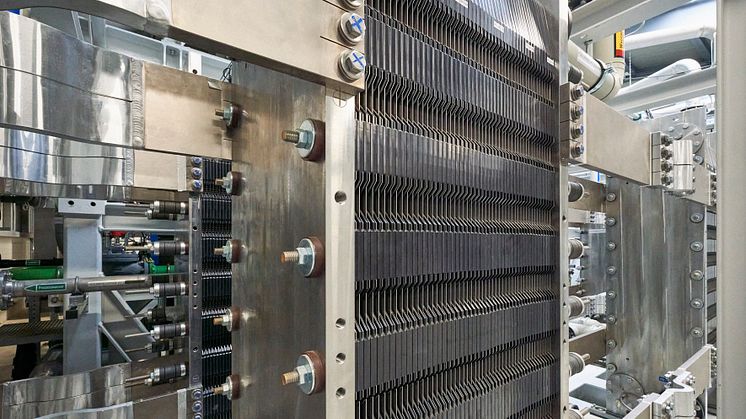
News -
thyssenkrupp nucera and Fraunhofer IKTS Open First SOEC Pilot Production Plant for Stacks for the Production of Hydrogen
On May 27, the first SOEC pilot production facility for electrolysis stacks was officially inaugurated in Arnstadt, Thuringia, in the presence of high-ranking representatives from science, politics, and industry. The event was also attended by the Minister-President of the State of Thuringia, Prof. Dr. Mario Voigt. With the commissioning of this pilot facility, the strategic partnership between Fraunhofer IKTS and thyssenkrupp nucera for the development and commercialization of Solid Oxide Electrolysis Cell (SOEC) technology is entering its next planned phase.
Back in March 2024, the renowned research institute and the global leader in high-efficiency electrolysis technologies for green hydrogen production had formalized their strategic collaboration in Arnstadt. Building on the development work by Fraunhofer IKTS, the partners are now jointly advancing SOEC technology toward industrial-scale stack production for large-scale green hydrogen generation. With this move, thyssenkrupp nucera is expanding its hydrogen technology portfolio, particularly in the field of high-temperature electrolysis for industrial applications. The SOEC pilot plant will initially produce stacks in limited quantities and targets an annual production capacity of 8 megawatts.
SOEC Stack Technology
The chromium-iron SOEC stack technology is based on an oxygen-conducting ceramic electrolyte substrate with two electrodes. These are assembled with interconnect components into a multi-layer stack. The SOEC cell design is particularly well-suited for automated mass production, enabling competitive manufacturing costs for electrolysers.
SOEC electrolysis delivers exceptionally high efficiency. In industrial processes that generate significant amounts of waste heat—such as in the steel industry—high-temperature electrolysis can reduce electricity consumption by 20% to 30% compared to other technologies.
Moreover, SOEC technology offers a decisive advantage: it enables the use of industrial CO₂ as a feedstock, which can be converted together with green hydrogen into green synthesis gas. This, in turn, serves as a precursor for sustainable base chemicals and e-fuels—a unique capability with tremendous potential for driving the energy transition.
Executive Statements
“The outstanding properties of SOEC technology have motivated us to pursue its commercialization together with our strategic partner, Fraunhofer IKTS. We are convinced of the advantages this electrolysis technology offers for the production of green hydrogen. It will play a central role in establishing a new, climate-friendly energy mix,” said Dr. Werner Ponikwar, CEO of thyssenkrupp nucera.
“By integrating SOEC technology with industrial waste heat sources or by directly producing synthesis gas from water and CO₂, companies can maximize the efficiency of green hydrogen production and effectively advance their decarbonization strategies. These unique benefits make SOEC technology a real game changer,” added Prof. Alexander Michaelis, Director of Fraunhofer IKTS.

